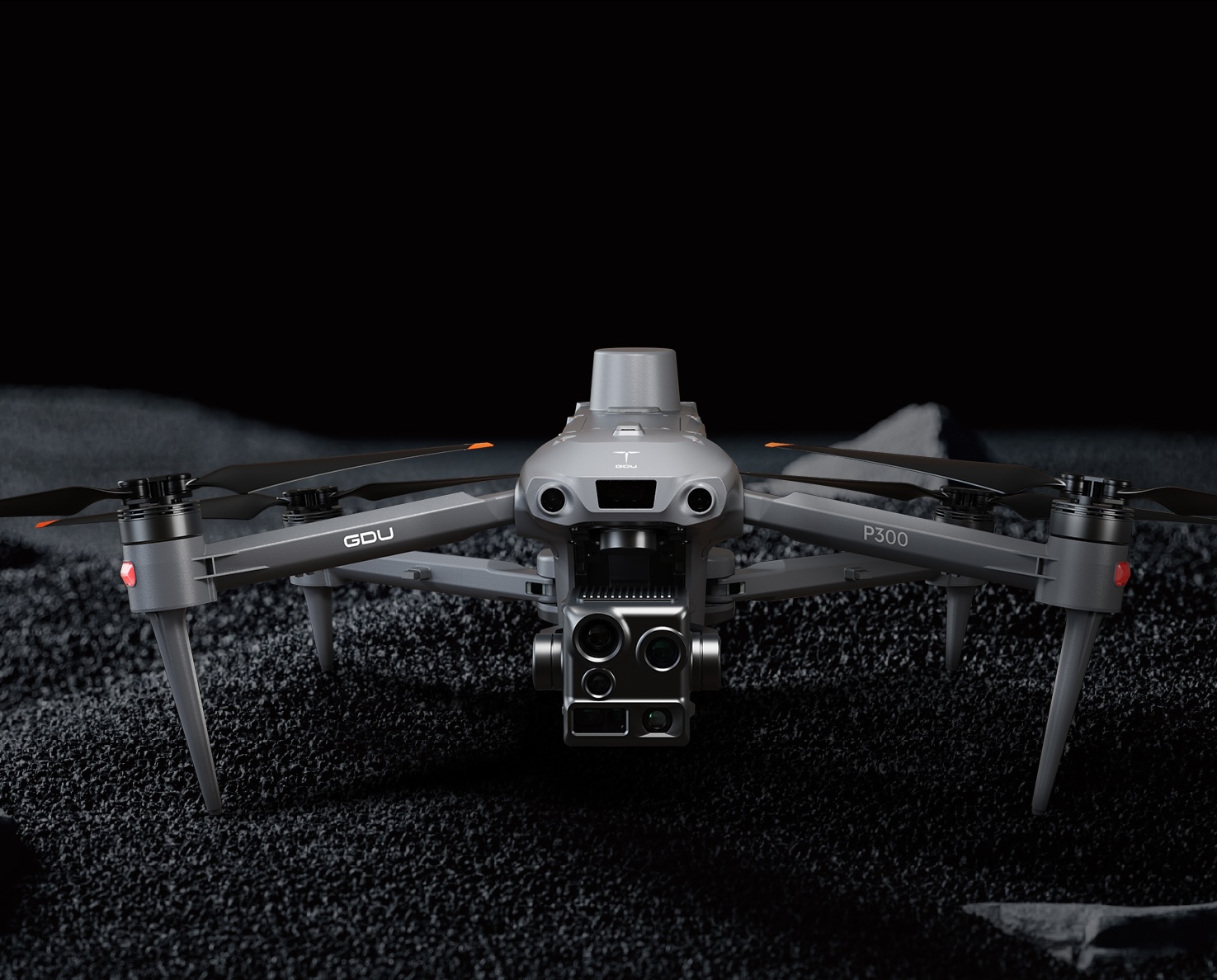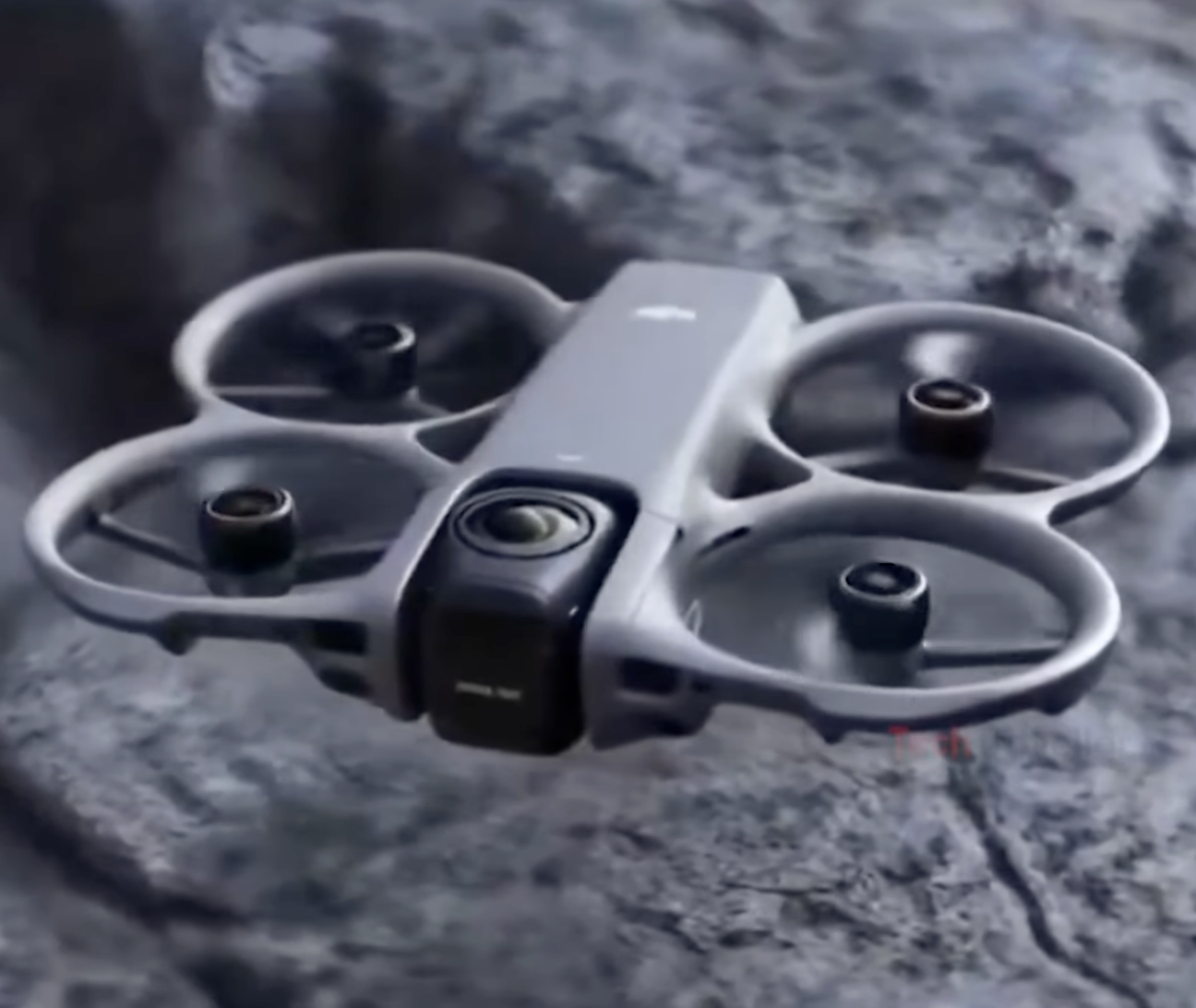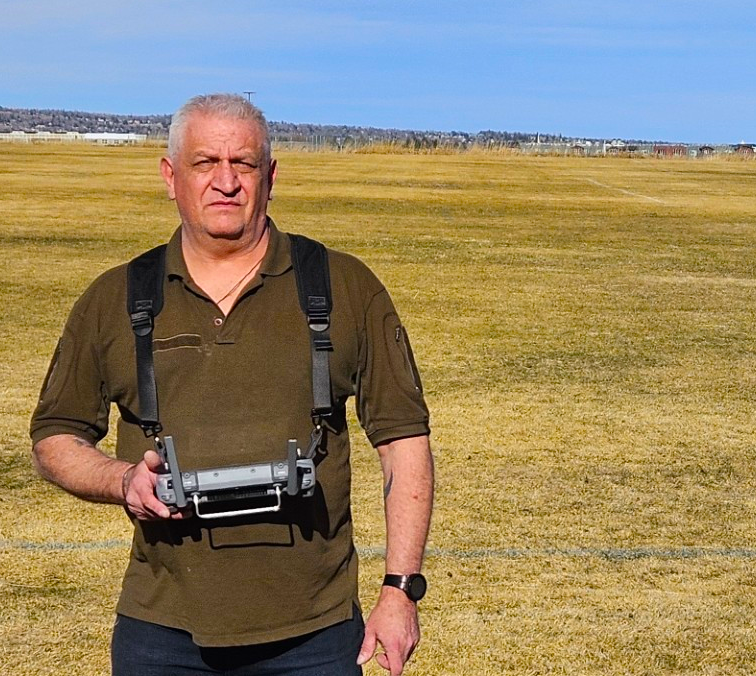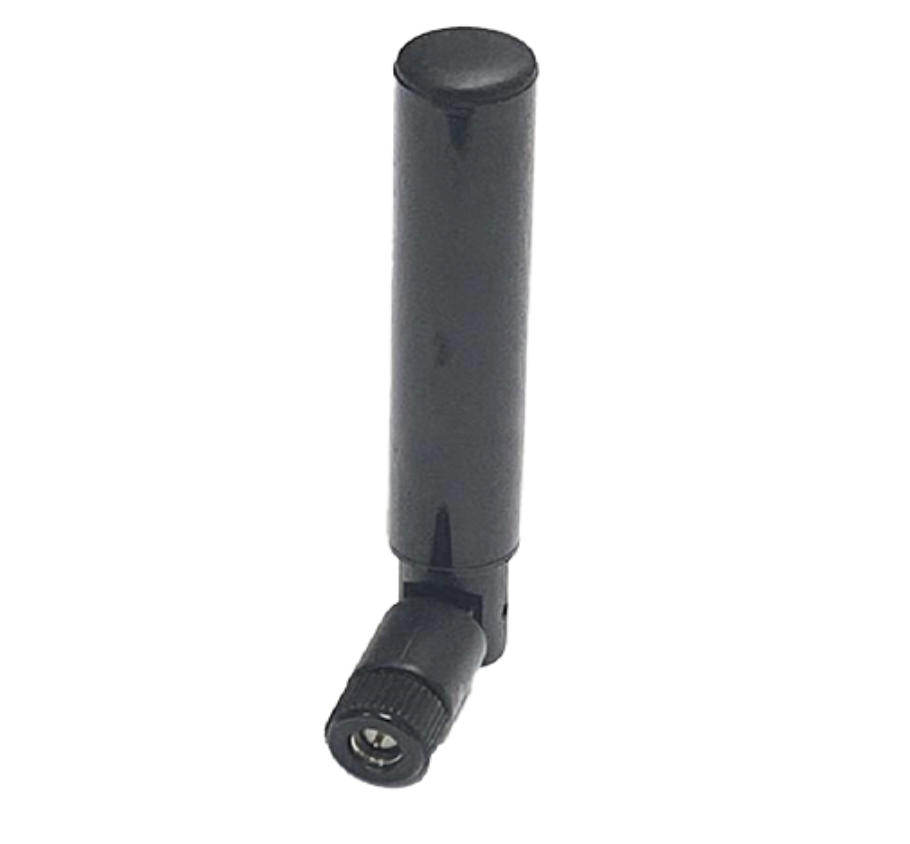Featured NewsProduct NewsSam KarpReviewed! Tattu R-Line 5.0 Batteries
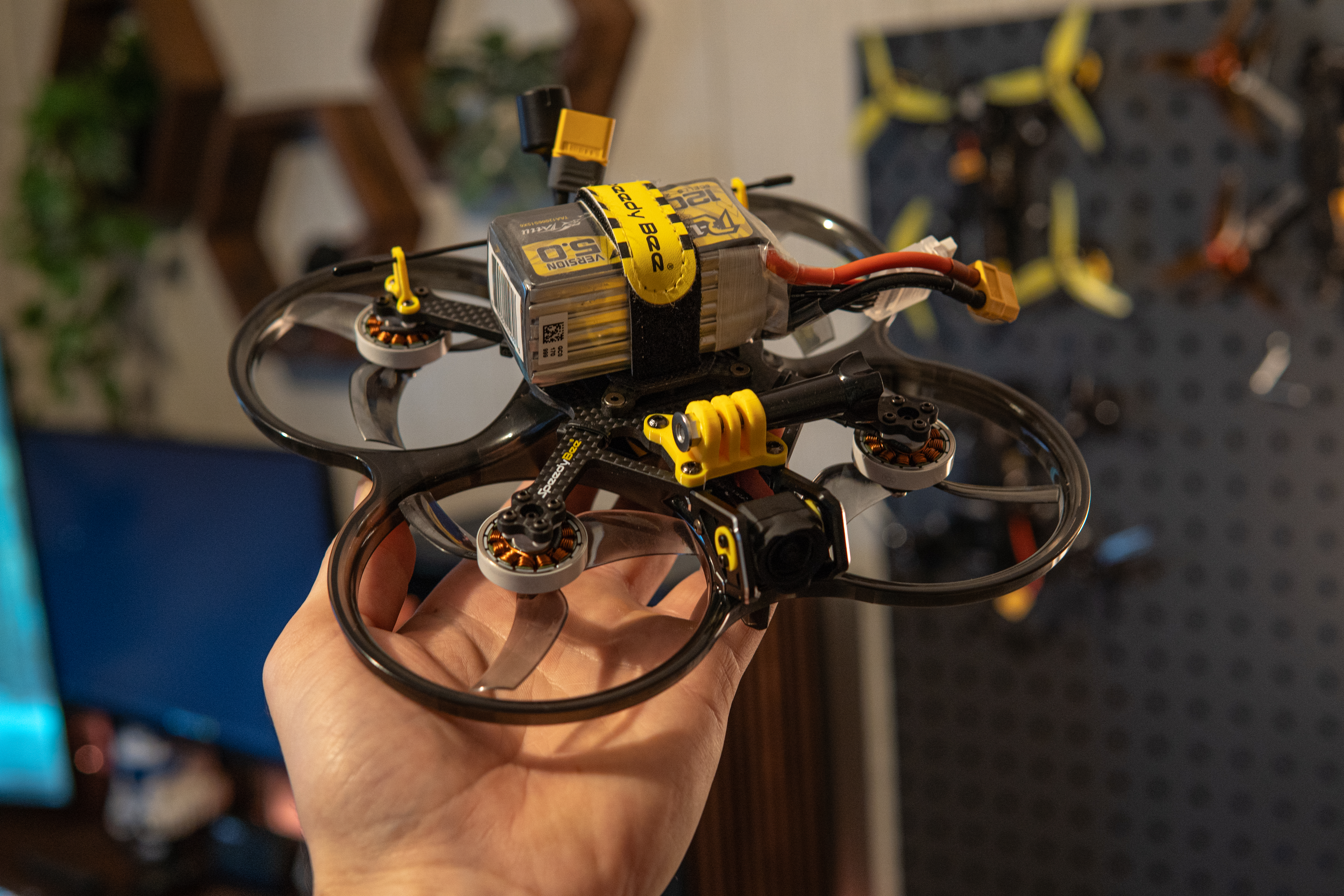
14 December 2023
By Sam Karp, The Droning Company FPV Columnist
In the rapidly advancing world of FPV drones, the pursuit of optimal power, reliability and flight time remains constant. Tattu, a renowned name in drone battery tech, has been making waves with its R-Line 5.0 series of batteries. With an impressive 150C discharge rate, compact form factor and an attractive price point. These LiPo batteries could be the new gold standard for FPV. In this review we’ll dive into key factors that make these batteries so optimal for FPV and help you decide if they’re the right batteries for your current, or next FPV build!
What’s Included
The Packaging is very straightforward with no extra or unnecessary fluff, just straight to the point. The batteries come in a yellow cardboard box with plenty of foam and bubble wrap to protect the battery during shipping. Included in the box is an instruction sheet, an optional balance lead protector, and the battery itself.
Design
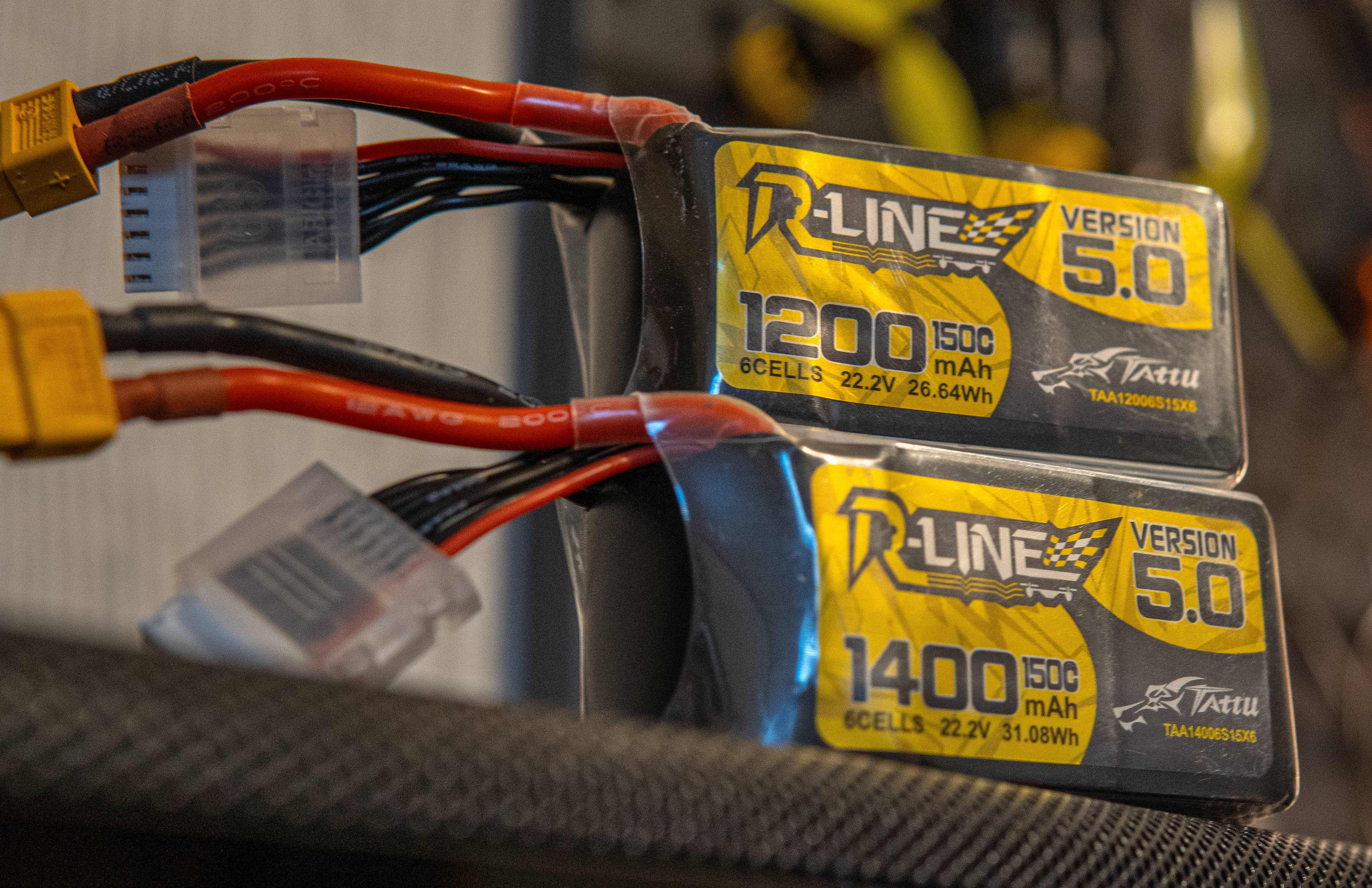
The first thing that immediately stood out about these batteries is how compact they are in comparison to other 6s LiPos with a similar capacity. Comparing the 1400mAh 6s Tattu batteries to my 1300mAh 6s batteries from CNHL, the Tattu batteries are actually quite a bit smaller despite having a larger capacity and a higher discharge rate of 150c vs 100c.
The story is the same for the smaller 1200mAh version as well. Comparing them to my favorite budget freestyle batteries, the “Speedy Pizza” 1200mAh, the Tattu batteries are slightly more compact, while maintaining the same capacity and again a higher discharge rate of 150c vs 100c.
Along with the smaller size comes some weight savings as well, with the 1200mAh Tattu battery weighing only 197g on average, and the 1400mAh version weighs in at roughly 222g on average. This is invaluable for lightweight builds such as racing quads, where you need the quad to be as light and quick as possible without sacrificing power, or Cinewhoops where you want the flight time to be as long as possible without making the quad too heavy.
Capacity, Discharge Rate, and Performance
Like I mentioned above, the Tattu R-Line 5.0 comes in two versions. A 6s 1400mAh battery with a discharge rate of 150C, and a 1200mAh 6s version also rated at 150C.
In a previous article of mine I talked about what the C rating is and how it affects performance. Here’s a brief quote from that article to bring you up to speed: “A LiPo battery’s C rating indicates its power discharge capability. It represents the maximum safe continuous discharge rate of the battery in relation to its capacity. In simpler terms, it tells you how quickly the battery can release its stored energy without overheating and damaging itself. A higher C rated battery will be able to deliver more amps, and maintain a high amp draw for longer periods of time with less voltage sag. In essence, a higher C rating = more punch from your battery and that’s what we want.”
So yeah, higher C rating = more punch and better performance from the battery. Your typical 6s FPV battery will have somewhere around a 100C rating. Tattu has really gone above and beyond with their rating of 150C. Before testing these batteries I had my doubts as to whether or not I’d notice any difference, but wow. After just the first flight I was able to tell a massive difference in performance. Full throttle punch outs felt incredibly powerful and I was never left wanting more. Performance throughout the flight felt extremely consistent with little to no battery sag towards the bottom of the voltage.
As far as flight times go, it’s going to vary massively based on what you’re flying, how you’re flying, and what components you’re using on your quad. My testing consisted of my custom 5 inch FPV drone on the Impulse RC “Apex Evo” frame, running the 25mm motors from FPV Cycle. I also did some testing with my newly built Cinewhoop on the SpeedyBee “Bee35” frame and the 23mm short motors from FPV Cycle.
For my 5-inch drone I would get roughly 4-5 minutes of flight time with the 1200mAh battery, and around 5-7 minutes on the 1400mAh battery.
With my Cinewhoop I opted to only test the 1200mAh battery as I feel it fits the 3.5 inch Cinewhoop platform better than the larger 1400mAh battery. But even with the smaller 1200mAh battery I was pushing 7-9 minute flights which I was not expecting at all but I’m extremely happy with.
Again, this will all depend on what you’re flying and how you’re flying. If you’re an FPV drone racer, you’ll most likely get significantly less flight time than someone cruising slowly over the trees. So take my results with a grain of salt, as yours will likely differ. But based on my experience the R-Line 5.0 batteries performed extremely well for flight time.
Durability and Longevity
It should come as no surprise that FPV pilots demand the most from their drones. Pushing them to the absolute limit. This often ends up resulting in a crash, it’s almost inevitable that you will at some point crash your FPV drone and when you do you want the components to be able to withstand multiple impacts. Now, I can’t say I’ve deliberately tested the durability of the Tattu R-line batteries, but I have had a number of crashes while flying with them and each time they’ve held up extremely well with only minor damage to the plastic casing containing the cells. On top of the physical abuse FPV pilots put our equipment through, we also put a lot of internal strain on the batteries. Whether from racing, performing high throttle freestyle maneuvers, or even pushing the batteries to their absolute minimum voltage when returning from a long range flight. We need to be sure the batteries we choose will be able to hold up to these harsh demands. In my testing the Tattu R-Line 5.0 batteries performed exceptionally well in this regard. During one flight in particular I had an issue with my on screen battery readout (an error in betaflight not having anything to do with the batteries) and inadvertently drained the cells past the safe minimum voltage of 3.2v per cell. By the time I realized what had happened the battery was already drained to around 2.9v per cell. I thought for sure that I had damaged the cells and ruined the battery. I set it aside thinking I would have to toss it, but after letting it sit for around 10 minutes the voltage recovered back above the 3.2v threshold. After more testing it hasn’t suffered any noticeable damage and still flies like new! Now, I don’t recommend ever draining a LiPo beyond 3.2v per cell, but it’s something to keep in mind if you’re ever in an emergency situation.
Price and Value Proposition
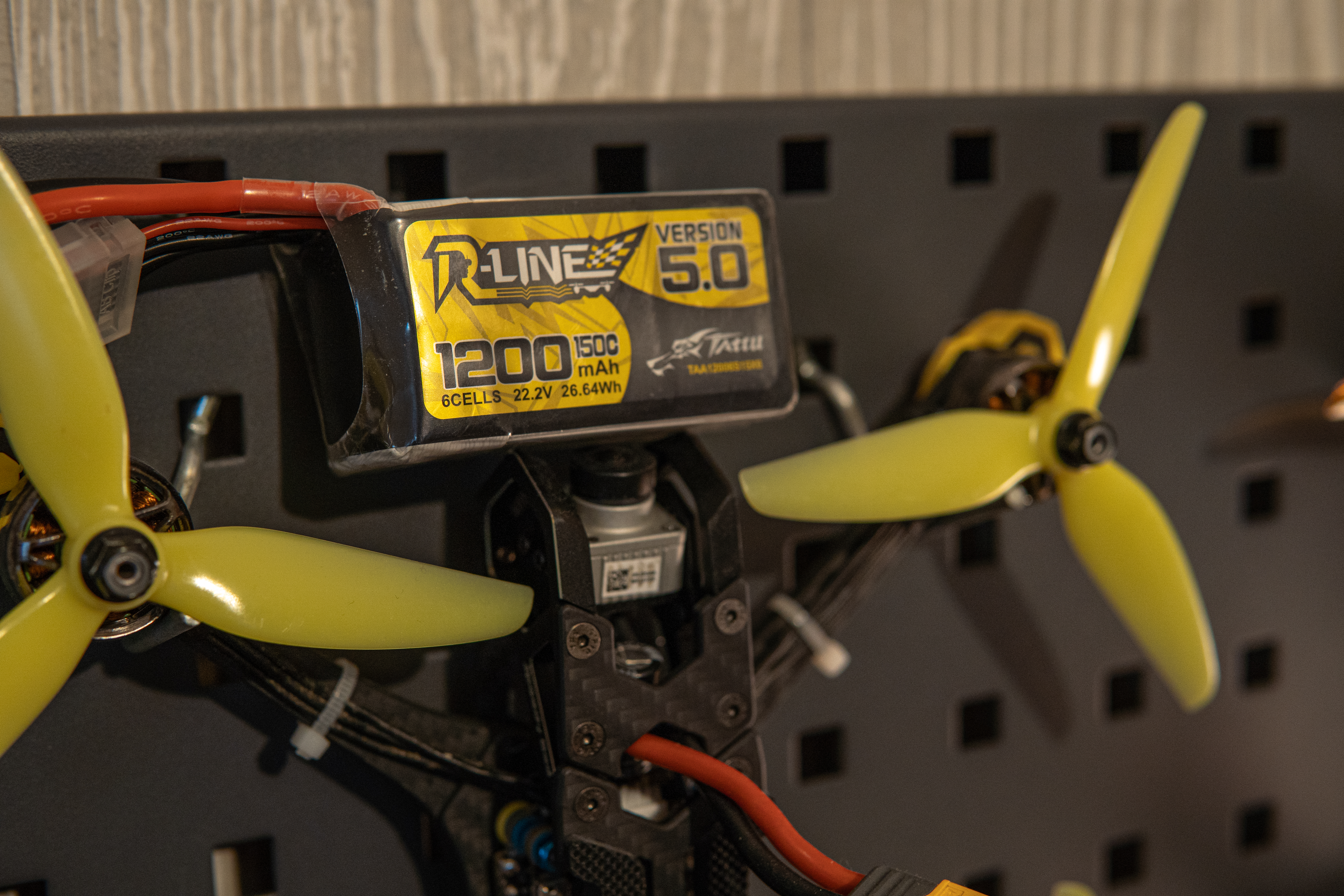
The Tattu R-Line 5.0 batteries really stand out from their competition. Not only for their top tier performance, but also their very attractive price points. The 1400mAh version is priced at $40.99, while the 1200mAh version comes in at $35.99. While I wouldn’t exactly call them “cheap”, the fact that they’re so compact, reliable, and have a remarkable 150C discharge rate, makes the value they provide for the money unmatched. When compared to the competition such as the “Lumenier N20” series which costs approximately $20 MORE at $60 per battery, you can start to see why the Tattu R-Line series is such an incredible value.
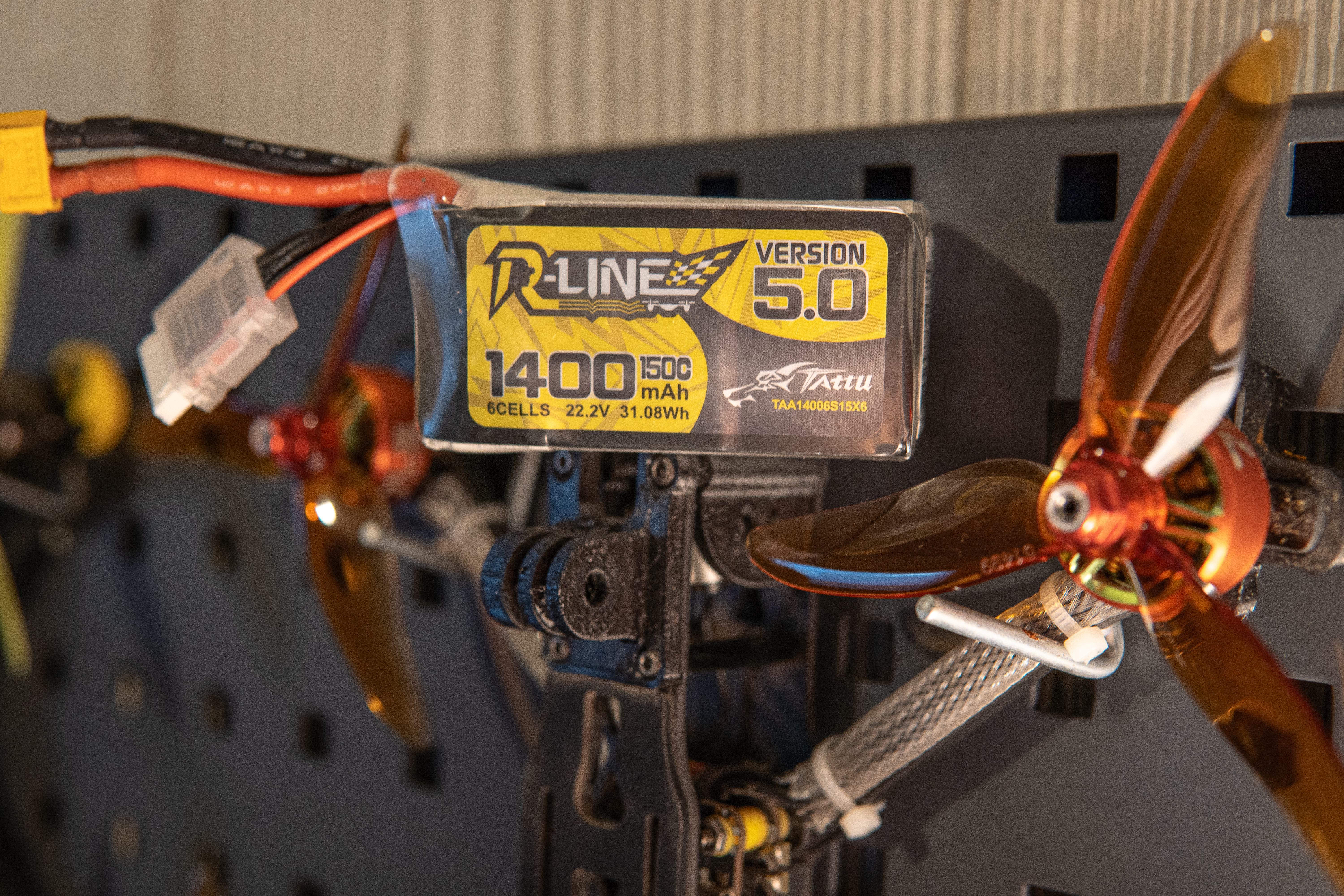
Conclusion
In conclusion, the Tattu R-Line 5.0 LiPo batteries, with their compact design, impressive 150C discharge rate, and attractive pricing, are undeniably a top tier option for FPV drone pilots, and in my opinion, they’re the gold standard for FPV batteries and they’re now my daily driver choice for FPV. As the drone racing and freestyle community continues to evolve, Tattu has once again proven that they’re at the forefront of battery technology. The investment in the Tattu R-Line 5.0 series is undoubtedly worthwhile for anyone seeking unmatched power and reliability for their FPV drones.

